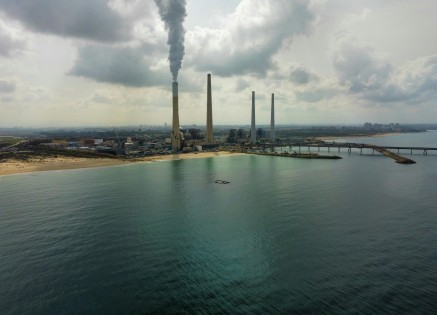Copyright © 2025 lmitac.com All Rights Reserved. Contact - Terms and Conditions - Privacy Policy - Quality Policy - Become an instructor - Vacancies - Sitemap
London Maritime Academy is a trade name for London Premier Groupversion: 2.9.0
London Maritime Academy is a trade name for London Premier Group

Posted on : 6/29/2025, 10:57:56 PM
Each year, the circle of emission control areas (ECAs) is getting wider to cover water areas from the north to the west, with the ultimate goal of protecting the environment, people's health, and marine life.
Moreover, the design of the emission control area (ECA) aims to prevent, reduce, and control emissions from ships based on the IMO regulations to lower sulphur oxides (SOx) emissions in the air and their impact on the coastline.
In this article, we will share with you updated information about emissions control areas (ECAs), how ECAs regulations are applied, tips to control emissions on ships, and what is the difference between designated ECAs and other areas.
Emission Control Areas (ECAs) are designated sea zones with stringent rules to prevent, reduce, and control air emissions from ships and maritime stations. However, the percentage of allowed emissions differs from one ECA to another, including mainly sulfur oxides (SOx), and nitrogen oxides (NOx).
The ECAs are established by the International Maritime Organisation (IMO) under the MARPOL Annex VI Convention with strict rules and regulations to prevent ocean hypocrisy dilemma and guarantee that ships operating in these emissions control areas must use cleaner fuels and adopt advanced emission-reducing technologies.
Till today, the emission control areas (ECAs) are defined and mandatory in existing locations like the Baltic Sea, North Sea, North American emission control coast, and the U.S. Caribbean Sea, with strategic plans to officially establish other sulphur emission control sea areas in the Mediterranean, Canada, and other areas.
All the emission control area (ECA) prevention regulations are applied and enforced at sea by national maritime authorities under the guidelines of the International Maritime Organisation (IMO) and the MARPOL Annex VI Convention.
So, to the technical part of these ECAs regulations, the designated authorities conduct an inspection on ships, on port or sea, to review used machines, controls, and engines, check fuel measures, and may even take fuel testing samples from ships to ensure regulation compliance.
However, violations of the demonstrated emission control zone regulations can lead to heavy fines, detentions, or other legal actions.

Based on the best marine environment training courses in London, ships need to follow and comply with the specified and designated main steps to be able to sail in an emission control area (ECA).
Constructed vessels and ships can effectively prevent bad emissions, like sulphur oxides (SOx), and nitrogen oxides (NOx), by optimising engine performance, lowering airborne emissions, and adopting required energy-efficient technologies on water.
Switching to designed low-sulphur fuels like marine gas oil (MGO) or LNG, which produce significantly fewer air pollutants than traditional heavy fuel oil while connecting ports, this supported fuel adoption will help ships meet emissions standards efficiently in an ECA location.
Another highly effective step to reduce emissions is installing scrubbers, as they are special onboard systems that remove sulphur from exhaust gases, allowing ships to continue using high-sulfur fuel while still complying with the emission control area limit.
Not only in the emission control area (ECA) but all over the sea, ships must comply with international maritime sustainability rules such as IMO 2020 and MARPOL Annex VI.
Furthermore, following these introduced maritime shipping regulations supports environmental protection and avoids penalties, additionally, allowing ships to ship through the sea from the west to the east areas while following the emission control area (ECA) standards.
We can say that there is a basic difference between the two zones, which is emissions and their allowed rates.
Emission control areas (ECAs) have stricter limits on air pollutants like sulfur oxides (SOx) and nitrogen oxides (NOx), and ships must follow tighter environmental rules, including using cleaner fuels or emission-reducing technologies.
On the other hand, the other marine areas have more relaxed emission standards compared to the ECAs.
Emission control areas will become standard areas around the world in the future to achieve the IMO goals and plans for protecting the environment and reducing emissions effectively.
That is why having professional marine environment training is essential to follow these ECA rules effectively and empower your career with highly requested certification.